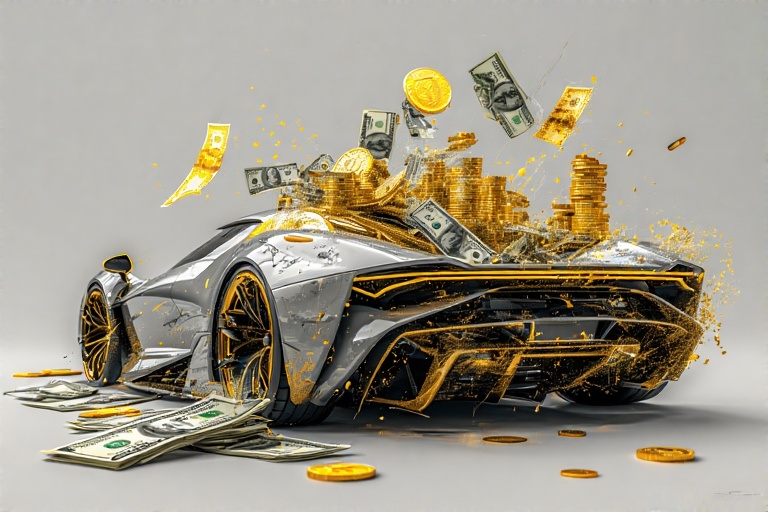Alternative assets offer investors a chance to diversify beyond stocks and bonds by tapping into markets driven by passion, rarity and cultural trends. Fine art, investment-grade wine and rare collectibles often move independently of equity indexes, providing a hedge against volatility. Yet these markets come with unique complexities—illiquidity, authentication challenges and storage costs—that demand careful analysis. This article examines major alternative asset classes, highlights recent performance data and outlines best practices for building a resilient, passion-aligned portfolio.
1. Art: The Premier Collectible
Art has long been viewed as the flagship alternative asset. According to the Knight Frank Luxury Investment Index, fine art was the top-performing collectible over the past decade, with returns rising nearly 29% despite economic headwinds. Auction blockbusters—such as Andy Warhol’s Shot Sage Blue Marilyn fetching over $158 million—underscore the upside for marquee names. Yet blue-chip pieces carry high entry costs and complex provenance checks, while emerging artists offer growth potential at lower price points.
- Performance Drivers: Global wealth growth, museum exhibitions and limited supply of top works.
- Valuation Metrics: Hammer prices, gallery markups, artist auction frequency and comparative sales.
- Market Access: Direct gallery purchases, auction houses, art-fund vehicles or fractional platforms like Masterworks.
2. Fine Wine: Liquid Value
Fine wine blends cultural appeal with quantifiable indexing. The Liv-Ex Fine Wine 1000 index delivered a 24.6% annual return in 2022, outperforming major equity benchmarks during the same period. Vintage Bordeaux, Burgundy and cult California wines attract collectors seeking both enjoyment and appreciation. Wine’s scarcity—driven by finite harvests and ageing—fuels price gains, but proper cellaring and insurance add layers of complexity.
- Key Indexes: Liv-Ex 100, 1000 and Fine Wine 50 track top labels and benchmark portfolios.
- Storage & Logistics: Climate-controlled vaults with provenance verification.
- Platform Access: Specialist brokers, online marketplaces and managed funds like Vinovest.
3. Collectibles: From Comics to Cars
Broadening the scope, collectibles span comic books, trading cards, classic cars and rare memorabilia. A mint-condition Action Comics No. 1—the debut of Superman—sold for $6 million at Heritage Auctions, while an ultra-rare prototype Star Wars Boba Fett figure fetched $1.34 million, illustrating the power of pop-culture scarcity. Collectibles often follow supply-and-demand cycles tied to generational interests and nostalgia.
- Categories: Vintage toys, sports cards, coins, stamps and automotives.
- Valuation Drivers: Condition grading, historical significance and pop-culture relevance.
- Trading Venues: Specialty auction houses, online marketplaces (eBay, Rally), and consignment dealers.
4. Digital Alternatives and NFTs
Digital art and non-fungible tokens (NFTs) have emerged as a 21st-century alternative class. Beeple’s Everydays: The First 5000 Days sold for $69 million in 2021, and Pak’s The Merge achieved $91.8 million through fractionalized ownership—demonstrating unprecedented digital-only scarcity. While NFTs unlock new collector communities, they also introduce volatility tied to platform risk, smart-contract security and hype cycles.
- Marketplaces: OpenSea, Nifty Gateway, Foundation.
- Authentication: Blockchain provenance, smart-contract audits.
- Risks: Rug pulls, platform de-listings and regulatory uncertainty.
5. Best Practices for Alternative Asset Investing
- Due Diligence: Authenticate provenance, verify condition and inspect third-party grading reports.
- Diversification: Allocate no more than 10–15% of total investable assets to alternatives to balance liquidity needs.
- Professional Storage: Use insured, climate-controlled facilities for wine, art and other perishables.
- Fractional Platforms: Consider shares in high-value items via regulated platforms to reduce ticket size and improve liquidity.
- Exit Planning: Research resale venues and fees—auctions, private sales or digital markets—to optimize timing and costs.
6. Risks and Liquidity Considerations
Alternative assets can experience wide bid-ask spreads and lengthy sales cycles. Illiquidity risk is compounded by high transaction fees—auction commissions often exceed 10%—and maintenance expenses. Vintage wine carries spoilage risk without proper cellaring, and art values can fluctuate based on market sentiment. Investors must account for storage, insurance and potential restoration costs when evaluating net returns.
7. Getting Started: A Step-by-Step Tutorial
- Define Goals: Determine whether you seek capital appreciation, income (e.g., rare book lending), or personal enjoyment.
- Choose Asset Mix: Balance blue-chip art and wine with higher-volatility collectibles or NFTs.
- Set Budget: Allocate a fixed percentage of your portfolio—typically 5–15%—to alternative assets.
- Select Channels: Identify reputable auction houses, online marketplaces and fractional-ownership platforms.
- Monitor Market Data: Track indices (Knight Frank, Liv-Ex), specialist reports and transaction records.
- Reevaluate Periodically: Adjust holdings based on performance, thematic shifts and personal objectives.
Conclusion
Alternative assets—from blue-chip masterpieces and collectible wines to pop-culture memorabilia and NFTs—offer compelling diversification and return potential. However, success hinges on rigorous due diligence, disciplined allocation and an understanding of each market’s mechanics. By blending established collectibles with emerging digital formats, investors can craft a portfolio that balances passion, cultural relevance and financial resilience in an ever-evolving landscape.







Add a Comment